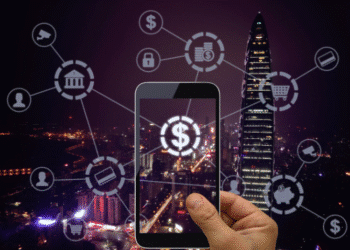Will the Apple Watch Speed Apple Pay Adoption?
The Apple Watch debuted yesterday to great fanfare, and the $10,000 edition has already been ordered and is speeding its way to the Bank Innovation offices as we speak.
Well, maybe not, but the long-anticipated watch is finally out — could it be the form factor that pushes Apple Pay into the mainstream?
Apple Pay is not widely used — just 20% of those who are able to use it (iPhone 6/6+ owners, and now Apple Watch owners) do, according to security firm Trustev.
It has been argued among mobile payment gurus for some time that the watch is a better form factor for mobile payments than the phone — it does not need to be pulled out of your pocket, for one thing. That is “marginally more convenient,” says Nick Holland, Javelin Strategy & Research’s head of payments.
The watch is tethered to a phone, where card information is entered, and works with phones as far back as the iPhone 5, released in the fall of 2012. An Apple Watch app for iPhones became available yesterday during the announcement.
Though the watch does not store card information, it will still work without the phone being present, according to Re/code. This seems like yet another security loophole for a platform that is already showing vulnerability to fraud. (Some would say Apple Pay is fraud-proof and it’s the bank systems around it that are vulnerable, but wherever it is taking place, the fraud seems to be happening.) One security concession, and slight addition of friction to the payment process, is that the watch requires a passcode for added security with payments. Payment information is transmitted to the terminal by tapping the button on the side of the watch twice.
A successful payment triggers an alert and small vibration known as “haptic feedback.”
I see Apple ignored my suggestion for “extreme” haptic feedback on Apple Pay for the watch, i.e. bigger the purchase, bigger the feedback.
— James Wester (@jameswester) March 9, 2015
Javelin’s Nick Holland expressed some admiration for the product, though he emphasized it would excite Apple fanboys the most. “It’s actually quite viable for payments,” he told Bank Innovation. “It’s on your wrist, of course, and effectively closer to the point of sale, but is it really such a handicap to pull your phone out of your pocket?”
Is the watch easier to pay with than the phone? The same conversation took place around mobile payments not so long ago — is the phone easier to pay with than the card? (Not really.)
“It’s a $350 peripheral,” Holland said. “Yes, it’s slightly more convenient. Will it make a real difference? I don’t think so. It all depends on the contactless utopia that is coming down the road — there are still locations where you can’t even use a credit card. It’s designed for an ecosystem that doesn’t really exist yet.”
Merchants aren’t ready for phone payments on a wide scale, let alone watch payments, in other words. Jason Del Rey wrote in Re/code that watch payments would “blow a cashier’s mind,” which maybe isn’t such a great thing. Walmart has made noises that it sees mobile payments as the future for its customers, and where Walmart goes, everybody goes.
More significant than Apple Pay on the Apple Watch will be the coming migration to EMV, or chip-enabled cards, which must be dipped rather than swiped and require longer time in contact with payment terminals, Holland argues. “Our research shows that just half of small merchants will be ready for EMV cards by October.” This is when the liability shift from issuers to merchants is set to take place.
Apple Pay on a fancy watch is well and good. But as Holland said, “When all is said and done, we’re still living in a magstripe country.”
Apple CEO Tim Cook also noted in the presentation yesterday that Apple Pay is now supported at 2,500 banks. That’s out of about 6,463 banks in total, according to FDIC figures, and an estimated 6,402 credit unions, according to the NCUA. Cook said that 700,000 locations across the country accept Apple Pay, including 40,000 vending machines.











